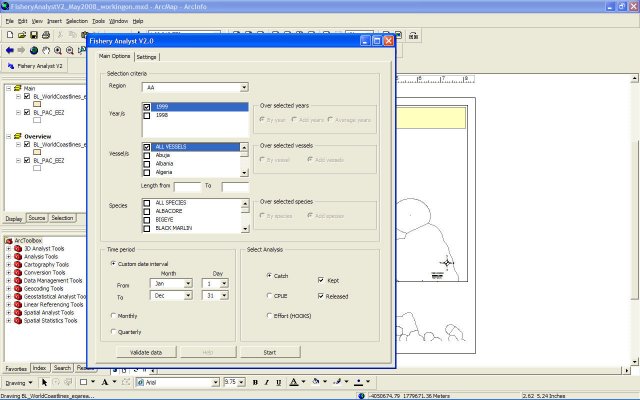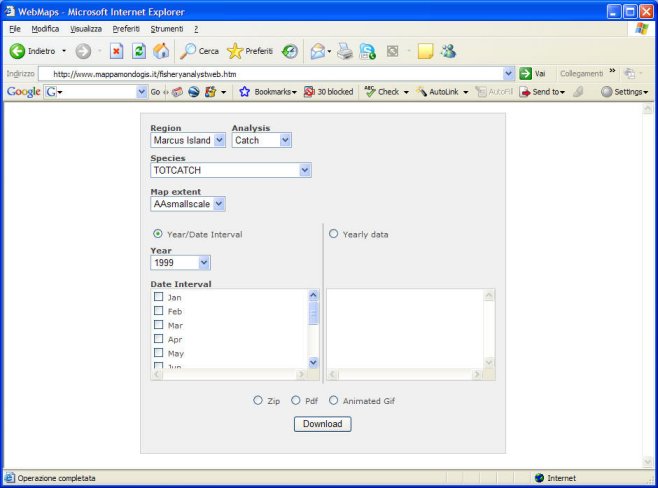Geographic Information Systems and IT solutions for the environment
Fishery Analyst is an ArcGIS 9.x and 10 application developed to effectively analyze and visualize temporal and spatial patterns of fishery dynamics. The main functions are quantitative estimation and visualization of catch and effort and their variation in space and time, analysis of fishing vessel utilization, data quality control, and deriving information on the location of important economic and threatened species. The application provides a user-friendly analysis interface allowing for easy and diverse output production. The interface allows the user to choose the analysis to perform (effort, catch density, catch per unit of effort etc) and to select data on criteria such as year, vessel name and/or size, and fish species caught. The output can be generated as yearly, monthly, quarterly or user-defined date interval plots. Results can be plotted in pre-defined map layouts and saved in quantitative GIS data file formats (raster and vector) or as graphic files and times series animations. The application provides an option to produce non-confidential plots for data protected by confidentiality policies.

The web component allows to easily serve pre-made plots over the web as animations or single graphic files by offering to the users a friendly and immediate searching and animation building interface.

Watch a video presentation of Fishery Analyst capabilities
held during an Ecosystem Based Management Tools network
webinar and feel free to
download the pdf version
of it:
Download the user manual or request us the peer reviewed article "A Geographic Information system for fisheries management in American Samoa" (author Francesca Riolo) published on the journal Environmental Modelling & Software, Volume 21, Issue 7, July 2006, Pages 1025-1041.:
ESRI Germany featured Fishery Analyst case studies in the article "The case of Pacific Islands Fishery Science Centre" on the GIS magazine "arcAKTUELL" 1/2011 (page 26).
ESRI Switzerland presented "The case of Porto Cesareo Marine Protected Area" on its case studies series.